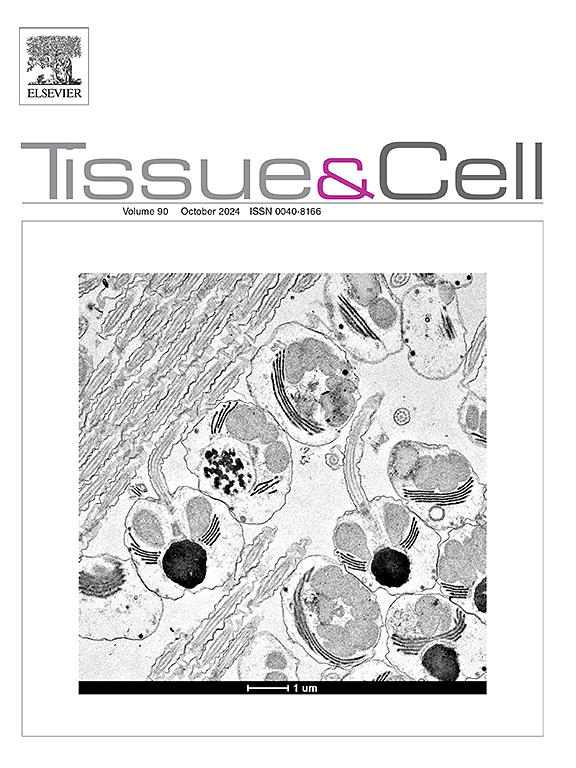Harnessing the potential of tissue engineering to target male infertility: Insights into testicular regeneration
IF 2.5
4区 生物学
Q1 ANATOMY & MORPHOLOGY
引用次数: 0
Abstract
Male infertility is among one of the most challenging health concerns in the world. Traditional therapeutic interventions such as semen and testicular tissue cryopreservation aim to restore or preserve male fertility. However, these methods are subject to limitations that impact their efficacy and are infeasible in cases such as patients who cannot produce mature sperm due to genetic or pathological disorders. Moreover, with the number of cases of prepubertal boys who must undergo gonadotoxic treatments rising, alternatives have been sought for fertility preservation to enhance reproductive rates in vitro and in vivo. Tissue engineering is a promising area that can address aspects that current therapies may not fully encompass through the creation of bioartificial testicular structures or 3D culture systems that allow the establishment of the essential conditions for sperm production. This study aims to first give a brief overview of stem cell therapy in treating male infertility and then go more in-depth regarding the novel methods and procedures based on tissue engineering that have the potential to offer new treatments for infertility caused by testicular disorders and defects.
利用组织工程的潜力来治疗男性不育症:洞察睾丸再生。
男性不育是世界上最具挑战性的健康问题之一。传统的治疗干预措施,如精液和睾丸组织冷冻保存旨在恢复或保持男性生育能力。然而,这些方法受到影响其功效的限制,并且在由于遗传或病理疾病而不能产生成熟精子的患者中是不可行的。此外,随着青春期前男孩必须接受促性腺毒素治疗的病例数量的增加,人们一直在寻求保留生育能力的替代方法,以提高体外和体内的生殖率。组织工程是一个很有前途的领域,可以解决当前治疗方法可能无法完全涵盖的方面,通过创建生物人工睾丸结构或3D培养系统,允许建立精子产生的必要条件。本研究旨在首先对干细胞治疗男性不育症进行简要概述,然后更深入地探讨基于组织工程的新方法和程序,这些方法和程序有可能为睾丸疾病和缺陷引起的不育症提供新的治疗方法。
本文章由计算机程序翻译,如有差异,请以英文原文为准。
求助全文
约1分钟内获得全文
求助全文
来源期刊

Tissue & cell
医学-解剖学与形态学
CiteScore
3.90
自引率
0.00%
发文量
234
期刊介绍:
Tissue and Cell is devoted to original research on the organization of cells, subcellular and extracellular components at all levels, including the grouping and interrelations of cells in tissues and organs. The journal encourages submission of ultrastructural studies that provide novel insights into structure, function and physiology of cells and tissues, in health and disease. Bioengineering and stem cells studies focused on the description of morphological and/or histological data are also welcomed.
Studies investigating the effect of compounds and/or substances on structure of cells and tissues are generally outside the scope of this journal. For consideration, studies should contain a clear rationale on the use of (a) given substance(s), have a compelling morphological and structural focus and present novel incremental findings from previous literature.
 求助内容:
求助内容: 应助结果提醒方式:
应助结果提醒方式:


